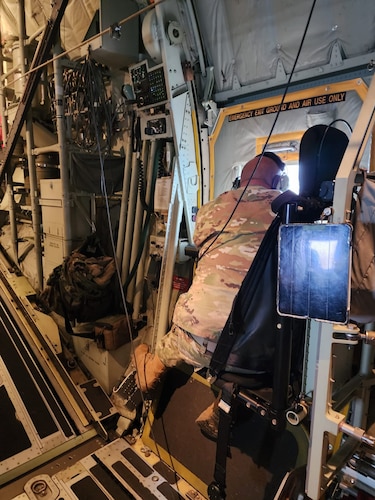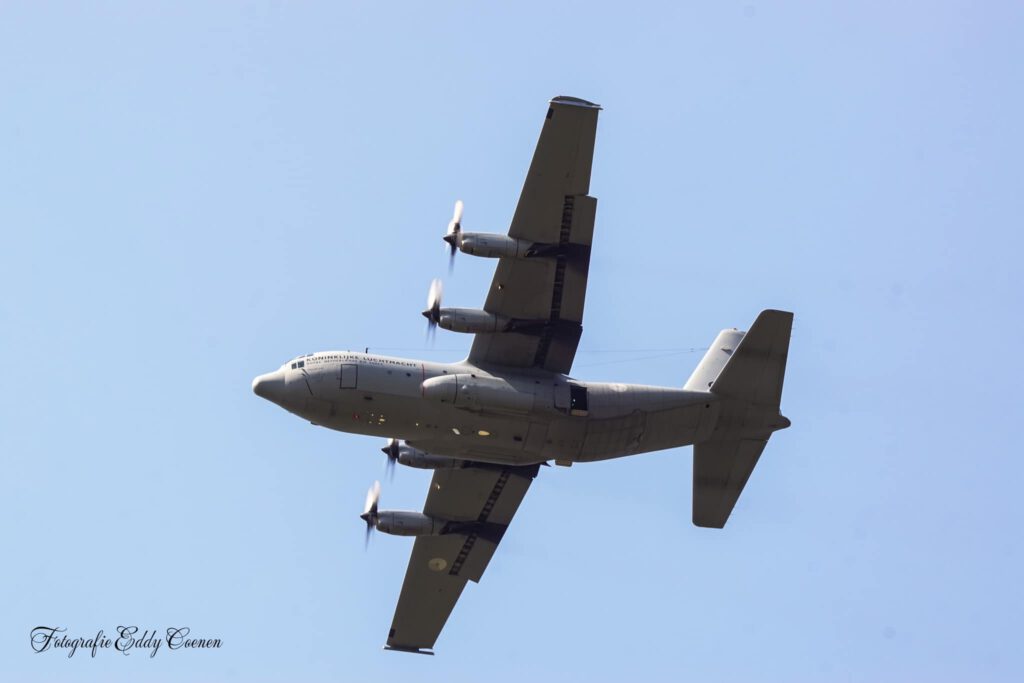Maand: juni 2023
Memories of the RAF’s Workhorse Hercules
End of an era:RAF flies workhorse C-130J Hercules final time
The C-130 Hercules has veen retired from the RAF VIDEO!
Nieuwe C-130J SUPER afgeleverd aan de Indonesian Air Force
Indian Air Force C-130J-30 KC-3802 at Cambridge Airport
New York ANG assists search for lost submersible
Published June 23, 2023
By Capt. Cheran Campbell and Eric Durr
New York National Guard
F.S. GABRESKI AIR NATIONAL GUARD BASE, N.Y. (AFNS) —
Thirty-eight Airmen assigned to the New York National Guard’s 106th Rescue Wing were part of the effort to locate the commercial submersible Titan that imploded while diving to the wreck of the RMS Titanic.

The wing launched three search missions 900 miles out over the North Atlantic from their base on the eastern tip of Long Island June 19-21 at the request of the U.S. Coast Guard.
The Coast Guard’s Sector Boston coordinated the search and rescue mission, which was launched when the 22-foot-long, 8-foot-wide vessel lost contact with its mother ship.
On June 22, the Coast Guard announced the Titan had imploded, killing all five people aboard. But that was not known when the 106th RW launched its first search at 3:18 p.m. June 19.
Most wing members were celebrating the Juneteenth holiday, but when the word went out that a rescue was underway, Airmen responded, according to Maj. Patrick Harding, the mission coordinator for the search operations.
“Every time we get a phone call for a mission, everyone at the base is eager to participate,” Harding said.
The HC-130J Combat King II search and rescue plane launched with six aircrew, two maintenance personnel and five pararescue jumpers.
Col. Jeffery Cannet, 106th Operation Group commander, said the pararescuemen were on the mission with rescue supplies in case the submersible was spotted bobbing on the surface. The plan would be to jump from the aircraft and provide aid as needed.
The maintenance personnel were along in case the aircraft had to be diverted to another airport instead of returning home to Long Island. They also helped look out to sea for the missing craft, Cannet said.
The first search mission returned to base at 2 a.m.
It was a challenging mission, said Capt. Christopher Colewell, one of the pilots.
“We didn’t have a lot of illumination. It was very, very difficult to conduct a search,” he said.
Harding said crew members were assigned specific roles and tools to optimize the search.
Personnel were assigned to manage the radar and the forward-looking infrared systems, known as FLIR.
Harding said the “scanners” on the long missions looked out the aircraft’s ports as the plane flew its search grid.
The flights launched on June 20 and 21 did not include pararescuemen due to information learned about the submersible after the first mission.
The rescue wing asked for volunteers to serve as scanners for those 10-hour flights. There were 13 Airmen on the June 20 flight and 12 on the June 21 mission.
Tech. Sgt. Wendy Carranza, a medical technician in the wing’s 106th Medical Group, said she was happy to volunteer to help.
“As an aerospace medical technician, we rely on all of our senses to help others in any situation that may arise to the best of our ability,” she said. “Using my eyesight against the current and with the current was an experience I will never forget.”
Tech. Sgt. Roberta Farris, noncommissioned officer in charge, commander and control operations, was another scanner on the flight.
“You don’t realize how vast the ocean is until you are looking out the window of the C-130 searching for a white capsule amongst the many whitecaps,” Farris said.
Col. Shawn Fitzgerald, the 106th Rescue Wing commander, applauded the 106th Airmen for their efforts.

“We would have loved for a better outcome, but I’m proud of our Airmen and their ability to quickly aid in this search,” Fitzgerald said. “My condolences to the family members of the lost. Our thoughts are with you.”
Maj. Gen. Ray Shields, the adjutant general of New York, praised the wing’s Airmen for responding “quickly and professionally as they have in the past when called for other missions. Our men and women are always ready to respond when needed.”
Missions into the North Atlantic are nothing new for the 106th RW.
On May 20, 2022, the 106th RW flew 1,200 miles over the Atlantic Ocean and dropped medical supplies so a sailboat crew could treat a sailor burned in an accident.
On April 24, 2017, pararescue jumpers from the 106th RW jumped into the Atlantic Ocean 1,500 miles from shore at night and performed emergency surgery on two seamen aboard the M/V Tamar who were injured in a fire.
Veteranen dag 2023 Lucht defile Spitfire en C-130H-30 Hercules G-273
Vanmiddag boven Den Haag is paradevlucht te zien met o.a. onze helikopters, gevechtsvliegtuigen en transportvliegtuigen. Nederland bedankt haar veteranen die zijn ingezet in dienst van vrede en veiligheid, vroeger en nu. @GemeenteDenHaag #nationaleveteranendag #veteranen foto https://twitter.com/Kon_Luchtmacht…

USMC KC-130J ” Rangers Special Tail” at Cambridge Airport
21-6-23 SCHAFFEN BE PARA DROP RNLAF G-988
Ook vandaag was G-988 weer actief dit keer een Para drop boven Schaffen BE mooi met de zijdeur open mooie foto’s van Eddy Coenen bedankt

